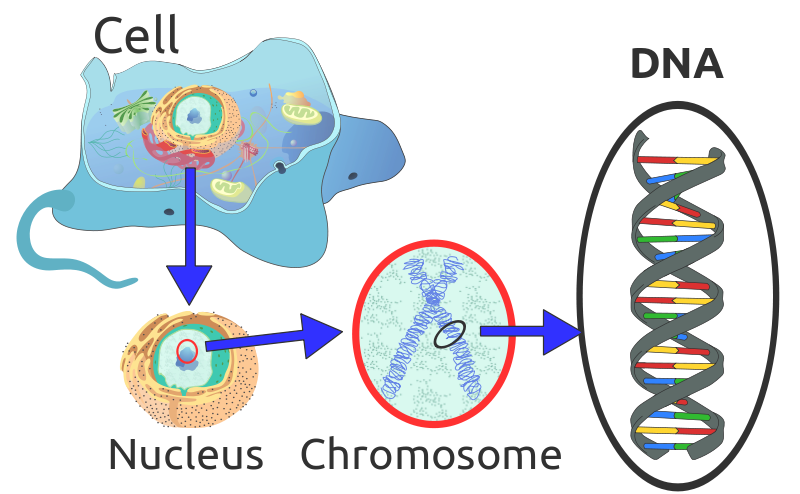Chromosome
Chromosomes are the condensed form of the chromatin material and consists of DNA wrapped in a typical fashion around the histone proteins. There are 23 pairs of chromosomes in a normal human being with the configuration differing between male and females. Males have 22 autosomes and XY sex chromosomes. Females have 22 autosomes and XX sex chromosome pair. The name ’XX’ and ‘XY’ denotes the structure of the sex chromosomes in females and males respectively. 
Essential characteristics:
- They are aggregated genetic material and the typical chromosome like structure is visible at prophase stage of mitosis in cell division.
- They are structurally different in prokaryotes and eukaryotes in the sense that they are circular in the former and linear in the later.
- Depending on the gene composition, they can be either autosomes (consisting of genes with constitutive functions) or sex chromosomes that are carries the information of sexual characteristics of an organism.
- A typical chromosome at late prophase has consists of repeating units of histone-DNA beads. Each bead has around 10 base pairs of DNA wrapped around histone octamer. The two beads are linked by linker protein made of non-histone protein.
- The close proximity of histone octamer and DNA can be accounted for by acidic-basic interaction of DNA-histone unit.
- Eukaryotic chromosomes have a darkly stained region called the centromere whose position varies throughout the length of the chromosome. The centromere is the point of attachment of the spindle fibers during metaphase in mitosis of cell division. On the basis of the position of the centromere, chromosomes can be of the following types:
- Metacentric : Centromere lies halfway the length of the chromosome.
- Acrocentric: Centromere lies more away from the center. The short arm is called the ‘p’ arm and long arm is called ‘q’ arm.
- Telocentric: Centromer lies at the end of the chromosome.
Composition:
- DNA
- Histone proteins(basic proteins)
- Non Histone proteins
- Telomers ( the tandem repeats present at the ends of chromosome)
Functions:
- They are structural entities and hold together the genetic material in one place.
- Although not a typical function, their specific structure allows access to specific genes at a required time. Exemplarily, depending on the epigenetic factors, only a specific small segment of chromosome will be unfolded via methylation of histone proteins winding the desired gene sequence.
